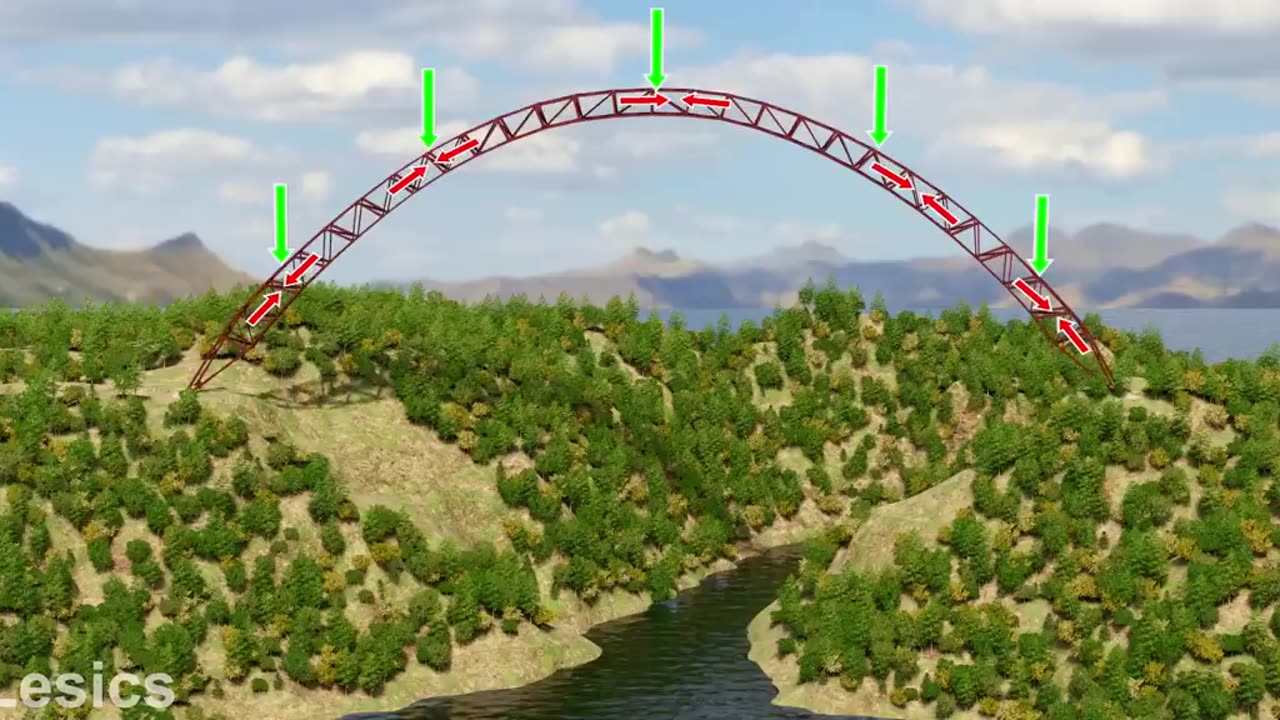Premium Only Content

the beautiful engineering
A bridge is a structure designed to span physical obstacles such as rivers, valleys, or roads, providing a pathway for transportation or pedestrian use. The field of engineering that focuses on the design, construction, and maintenance of bridges is known as bridge engineering. Bridges play a crucial role in connecting different regions, facilitating the movement of people and goods.
Here is a brief description of the key components and considerations in bridge engineering:
Types of Bridges:
Beam Bridges: Simplest form with horizontal beams supported at each end.
Truss Bridges: Consist of interconnected elements forming triangular units for added strength.
Arch Bridges: Employ arches for support, distributing weight and stress.
Suspension Bridges: Feature towers and cables supporting the bridge deck.
Cable-Stayed Bridges: Similar to suspension bridges, but cables attach directly to the towers.
Materials Used:
Steel: Common for its strength and flexibility, especially in truss and suspension bridges.
Concrete: Offers durability and versatility, often used in various bridge types.
Wood: Traditional material, still used in some pedestrian or historical bridges.
Composite Materials: Combining different materials for enhanced performance.
Structural Components:
Superstructure: The part of the bridge that supports the load, including the deck and main supporting members.
-
 59:57
59:57
The Dan Bongino Show
6 hours agoGeraldo Wants To Fight Me Again? (Ep. 2377) - 11/25/2024
752K2.38K -
 1:06:06
1:06:06
The Rubin Report
3 hours agoBill Maher Makes Neil deGrasse Tyson Go Silent with His Proof of Failing Science
76.8K70 -
 1:15:38
1:15:38
Geeks + Gamers
3 hours agoDisney Still HIDING Snow White Trailer After Rachel Zegler BACKLASH, Wicked And Gladiator Box Office
35.2K5 -
 1:57:01
1:57:01
Steven Crowder
5 hours agoWill The Left Use The Ukraine War to Sabotage Trump's Presidency?
375K203 -
 DVR
DVR
Game On!
2 hours agoCollege Football Playoffs CANCELED! | Crick's Corner
4.36K -
 38:00
38:00
Tudor Dixon
4 hours agoDudes Shouldn't be in Women's Bathrooms | The Tudor Dixon Podcast
35.3K10 -
 16:27
16:27
Dave Portnoy
5 hours agoDavey Day Trader Presented by Kraken - November 25, 2024
75.7K3 -
 1:27:43
1:27:43
Graham Allen
6 hours agoJoe Rogan Warns The World About WWIII! Make Military Great Again! + Elon Is Buying MSNBC?!
112K154 -
 1:20:46
1:20:46
Caleb Hammer
4 hours agoEntitled Gen-Z Girl Uses Payday Loans To Party | Financial Audit
31.2K6 -
 2:02:54
2:02:54
LFA TV
15 hours agoBUSTED! UKRAINE $$ LAUNDERING! | LIVE FROM AMERICA 11.25.24 11am EST
62K21